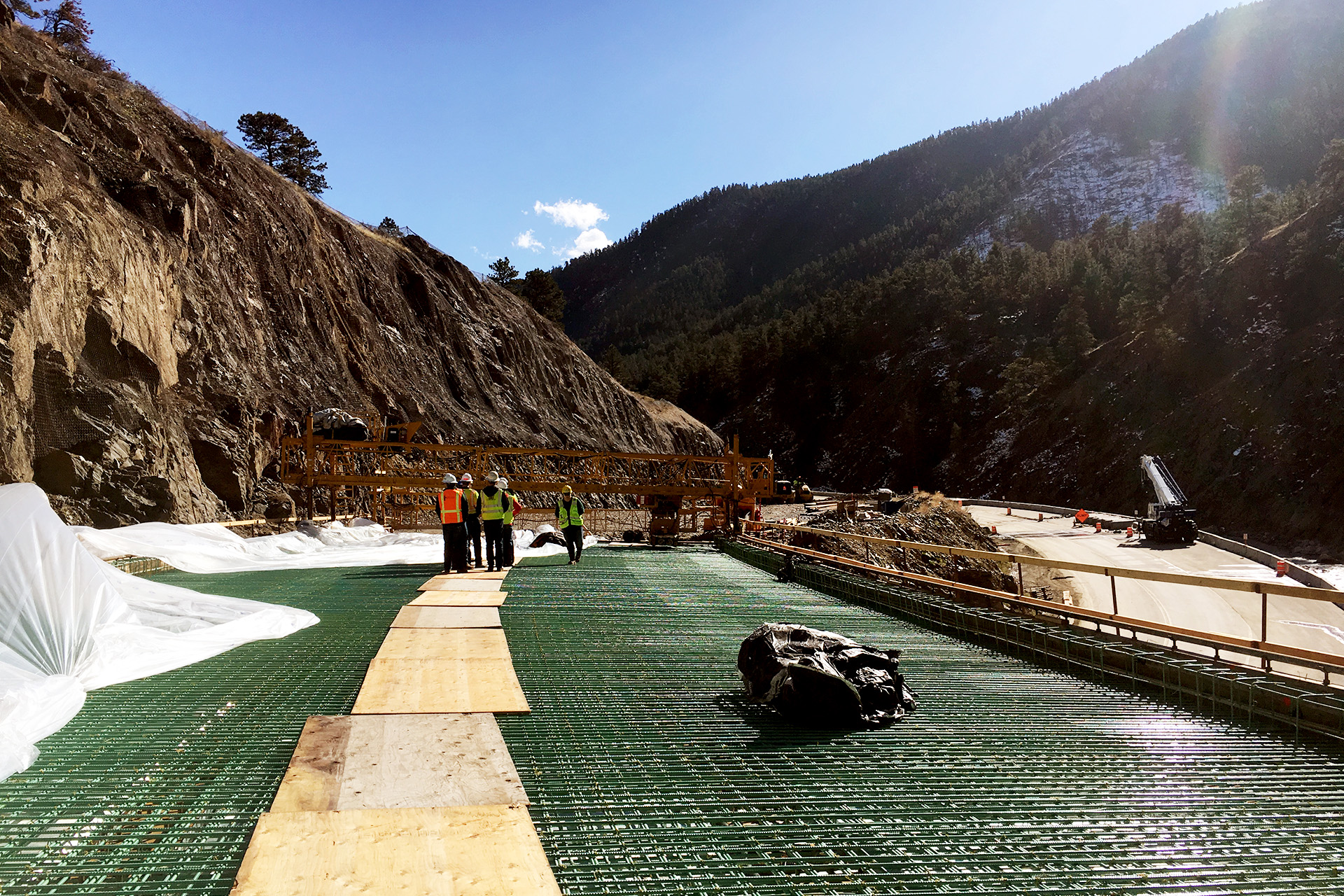Not enough human capital
Lack of road construction inspectors puts human focus on supply chain problem
story by Mark Gokavi
published Nov. 29, 2023
Imagine (or just remember): You are stuck in your vehicle on I-25 or any interstate highway. In a construction zone. Perhaps you are late. Maybe there’s an accident. Drivers are losing fuel, time and patience. Semi-trucks cannot deliver goods. There is no exit for miles. Sound familiar?
That scenario highlights a lack of human links in the supply chain. Highway transportation projects do not get done until there are enough workers to finish them. Inspectors are needed to ensure that roads, bridges and structures are safe.
“We don’t have enough human capital specific to this project,” said Christofer Harper, an associate professor and heavy construction chair in Colorado State University’s Construction Management program. “It is an ongoing theme across the board in construction.”
Harper, fellow CSU Associate Professor Jonathan Elliott, and other colleagues – including CSU Construction Management Department Head Paul Goodrum – were commissioned to do a research study and presented the project findings last year to the Transportation Research Board of the National Academies of Sciences, Engineering and Medicine. Their report digs into the construction inspector shortage and provides workable solutions.
“We do not have enough folks. The average age of a Department of Transportation employee right now is 46 or 47 years old,” Harper said. “They have been there 20-25 years; they are not going to be there until age 65.”
Transfer of knowledge, job position issues

Harper said the institutional knowledge leaving the industry during construction growth and disinterest toward inspector jobs contribute to extended highway construction time.
Also, the research found Baby Boomer and Generation X knowledge transfer to Millennials and Gen Z’ers is not smooth.
“The great technology advances can impede things when you’ve got older folks inspecting with tools that are cumbersome or difficult,” Harper said, adding that while younger employees might be more adept at using technology, they lack experience. “Inspectors used to use tape measures and rods. Now it is GPS devices, laptops and handheld devices that measure using lasers.”
The study found inspector jobs involve being on call, working weekends and in hazardous conditions, including inclement weather. “There are variables that added up,” he said. “It brought us to this situation.”
Various potholes
Harper said the report shows that the reasons for DOT construction employee shortages range from private sector competition, the work’s physical nature, and downfalls in advancement and pay.
“Working for a DOT was previously considered a good position,” Harper said. “Over the years, that’s faded.”
Highways are never fully complete. Harper said traffic issues caused by interstate highway construction projects could continue to roll slowly due to an infrastructure bill and lack of human resources.
In November 2021, President Biden signed the $1 trillion bipartisan Infrastructure Investment and Jobs Act into law. “The IIJA passed in November 2021 infused billions of dollars in highway projects, and DOTs are struggling,” Harper said. “It’s great we finally got money, but we can’t do anything because we just don’t have the workers.”
Paving the road ahead

Experts say that highway construction projects could continue to roll slowly due to the lack of human resources.
Harper said career development is key. He said DOTs must invest in recruitment and training, advancement and pay improvements to hold onto inspectors.
One finding was that 18-year-olds like making $30 per hour starting out. “By the time they are 19, 20 or 21, they realize, ‘I can’t go anywhere from this position.’ That is a struggle for the DOTs.”
Harper said trade schools and community colleges are great alternatives for those who want to get into the trades or inspection positions.
As DOTs struggle, they turn to consultants. The work deadlines and quality of the work may become a concern. “If you don’t pass inspections, you get non-compliance reports, and projects take longer,” Harper said. “You could be closing lanes on I-25 for maintenance more because the original work wasn’t done well.”
The study found that for DOT construction inspector positions, DOTs should define core competencies, and that both formal and informal education, and certifications are needed to create a pipeline to fill these positions.
Clearing the intersection
Harper thinks the construction inspector and construction worker shortage will get worse for three to five years before turning around. “This is not just a construction issue, it’s an economic issue,” he said. “It’s a society issue.”
Harper hopes his group’s recommendations spur meaningful industry change. “Otherwise, we’re going to end up paying more and sit longer in traffic,” he said. Harper said many sections of the country’s interstate sections are 75 years old and in need of rehabilitation.
“We do not want road construction projects to last for dozens of years. We do not want to inefficiently spend hundreds of millions of dollars of taxpayer monies that could have gone to other projects, but that is what is happening,” Harper added. “That is going to continue unless we try more things to find solutions. Some DOTs are doing that.”
The Department of Construction Management is part of CSU’s College of Health and Human Sciences.
Read more about Supply Chain Research
At Colorado State University, faculty and students are producing cutting-edge supply chain research and providing important answers to questions on supply chain management. This special report from SOURCE explores the work happening at CSU and provides insights into the global supply chain.